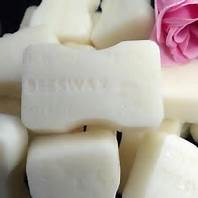What's Happening in the USA - Cosmetic Regulations - Toxic Beauty









What's Happening in the USA - Cosmetic Regulations - Toxic Beauty
If you live in America, you'll be disappointed to know that cosmetics are the least regulated products under the Federal Food, Drug and Cosmetics Act (FD&C Act). As the Breast Cancer Fund note in their 2008 report. State of the evidence: The Connection Between Breast Cancer and the environment, 'Major loopholes in federal law allow the $50 billion cosmetics' industry to put unlimited amounts of chemicals into personal care products with no required testing, no monitoring of health effects and woefully inadequate labelling requirements. 'The US Food and Drug Administration (FDA) is responsible for enforcing cosmetic and pharmaceutical regulations and within the FDA, the Office of Cosmetics and Colors regulates cosmetic products.
In contrast to products classified as drugs or cosmetics and drugs under the FD&C Act introduced in 1938, cosmetics and their ingredients do not legally have to be approved, tested for safety or reviewed before being marketed to consumers, with the exception of colour additives. Any testing undertaken is the responsibility of the manufacturer. This regulatory chasm means that potentially harmful substances can readily be introduced into cosmetic products.
The FD&C Act prohibits the marketing of adulterated or misbranded products that are in some way contaminated or improperly labelled, but the FDA can usually only intervene to restrict or ban an adulterated or misbranded product once it has been released to the marketplace and if it can prove that its use may cause an injury to users, it has been labelled incorrectly, or contravenes the law in some other way. This is difficult for the FDA because the agency lacks the authority to obtain the necessary information. There is a system under which manufacturers can voluntarily report information to the FDA, but only around 35 per cent do so and sometimes companies file incomplete data.
Since 1976, if the safety of a product has not been substantiated prior to marketing it is considered as misbranded if the label does not bear the statement, 'Warning: The safety of this product has not been determined.' However, a huge number of cosmetic ingredients have not been adequately assessed for safety and most of the beauty products containing them are not labelled with this warning. Even if the FDA considers them to be misbranded or adulterated, with a shortage of safety data available and the agency's lack of oversight to access records relating to safety and proof of effect, this is difficult to prove. Plus, how many manufacturers are going to willingly convey on their products that their safety has not been substantiated?
It is also worth knowing that some cosmetic companies practise double standards, producing formulations for the European market minus ingredients prohibited in the EU (such as certain phthalates) and concocting separate formulations for the US market that contain substances banned in the EU.
Reference: Toxic Beauty: Dawn Mellowship
Articles-Latest
- Skin tags: Why they develop, and how to remove them
- So That’s Why Your Skin Gets Crepey As You Get Older
- Eye Infection from False Eyelashes
- Teeth stain removal and whitening solutions
- Benefits of collagen for skin
- Why vitamin E should be part of your skincare regime
- Can gray hair be reversed?
- Hair loss affects 1 in 10 women before the menopause – here’s how to treat it
- Conscious ageing and Black skin: What happens when Black does crack?
- Your skin color may affect how well a medication works for you — but the research is way behind
- The C word Cancer
- Astringents
- How does light therapy work? The science behind the popular skincare treatment
- The Most Offensive Fashion Police Criticisms of All Time
- Everything you need to know about lip filler migration, as told by the experts
- Pig semen and menstrual blood – how our ancestors perfected the art of seduction
- Everything you need to know about benzoyl peroxide
- We've bleached, relaxed, and damaged our hair to make ourselves look more white
- Will this be the year that facial filler is cancelled?
- Shock of the old: 10 painful and poisonous beauty treatments
Cosmetic ingredients
LOGIN
Who's On Line
We have 146 guests and no members online
Articles-Most Read
- Home
- White Bees Wax
- Leucidal
- Cosmetic Preservatives A-Z
- Caprylyl Glycol
- Cosmetics Unmasked - How Safe Are Colorants?
- Cosmetics Unmasked - Choosing Ingredients
- Cosmetics Unmasked - Colorants And Fragrances
- EcoSilk
- Toxic Beauty - Who's Looking At Cosmetics?
- Cosmetics Unmasked - Fragrances
- Microbes and Cosmetics
- Chemicals Lingering In The Environment
- Microbes and Safety Standards
- Yellow Bees Wax
- Potassium Sorbate
- Toxic Beauty - Hazardous To Your Health
- What's Happening in the USA - Cosmetic Regulations - Toxic Beauty
- Synthetics In Cosmetics - The Industry Fights Back
- Fresh Goat's Milk Soap
- Active Ingredients
- Cosmetics Unmasked - Listing Cosmetics
- Toxic Beauty - Cocktails and Low Doses
- Natural Waxes A-Z
- Natural Butters A-Z



